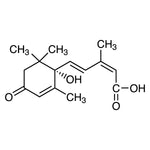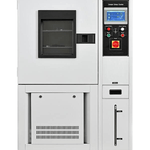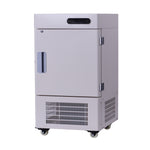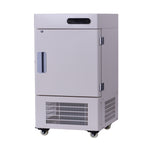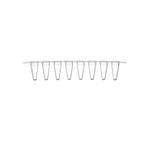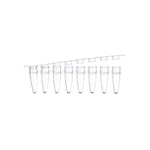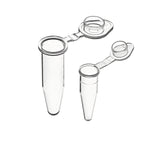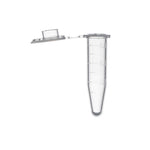You have no items in your shopping cart.
Different Types of Pipettes
An In-Depth Overview of Laboratory Pipettes and Their Applications
Pipettes are professional implements used in biological, chemical, and medicinal settings across various educational, professional, and industrial environments. They differ in material, accuracy, volume, calibration, and intended use, but all must meet high quality standards to deliver reliable and reproducible results.
To help you determine which instrument best suits your application, let us take a closer look at the various types of pipettes that Biofargo Inc. manufactures for laboratories and research facilities worldwide.
Graduated Pipettes
Graduated pipettes are distinguished by having the pipette’s volume marked out in well-defined increments along the side of the tube. This design allows for a high degree of precision when measuring solutions, although they are slightly less accurate than volumetric pipettes.
Smaller graduated pipettes are suitable for handling low-volume samples, while larger-capacity versions are available for transferring more voluminous materials.
To operate effectively, these pipettes require a vacuum or suction source. Blow-out (serologically graduated) pipettes do not indicate the zero point at the conical tip, whereas drain-out (Mohr graduated) pipettes clearly mark this reference point.
Air Displacement Pipettes
Air displacement pipettes are highly accurate instruments designed to dispense measured liquid volumes according to user-defined settings. They function through a piston-driven air displacement mechanism.
When the user depresses the plunger, a ceramic or metal piston enclosed within an airtight sleeve moves upward, creating a vacuum that draws the target solution into the tip. The liquid can then be transported and released precisely as required.
These pipettes are available in both single-channel and multi-channel configurations. Many laboratories are transitioning from purely mechanical versions to Electronic models to enhance accuracy and reduce the risk of musculoskeletal strain caused by repetitive pipetting.
Although this mechanism enables exceptional precision, air displacement pipettes require regular calibration to maintain accuracy. Their performance can be influenced by environmental conditions, temperature fluctuations, and user technique, which is why proper training is essential.
Available configurations include:
- Fixed or adjustable volume
- Different volume ranges
- Single-channel, multi-channel, and repeater models
- Standard or locking mechanisms
- Cylindrical or conical tips
- Electronic or manual operation
Positive Displacement Pipettes
Positive displacement pipettes closely resemble air displacement pipettes, with one major distinction: they utilize a disposable plastic micro-syringe at the tip, which incorporates both the piston and the capillary.
These pipettes are particularly valuable in applications where contamination must be strictly avoided, such as DNA handling, or when working with highly viscous or volatile substances in very small volumes.
Transfer Pipettes
Transfer pipettes, also known as Beral pipettes, are similar to Pasteur pipettes but feature a single-piece plastic bulb that serves as a holding chamber for the liquid being transferred.
Pasteur Pipettes
Pasteur pipettes are typically made of glass and have a bulb-shaped design resembling a traditional dropper. Named after the renowned physician Louis Pasteur, these pipettes are more commonly used in biology than in chemistry.
These pipettes are intended for transferring liquids between vessels when measurement precision is not critical. They are neither graduated nor calibrated, making them relatively inaccurate, and are often disposed of after use.
Other Specialized Pipettes on the Market
Despite the wide range of pipettes available, certain laboratory tasks require highly specialized designs. Examples of specialized pipettes include:
- Van Slyke Pipette: Invented by Donald Dexter Van Slyke, these pipettes are traditionally used in medical applications such as volumetric analysis.
- Pipetting Syringe: Hand-held devices that combine the functions of graduated pipettes, burettes, and volumetric pipettes. They are ISO Grade A calibrated and suitable for viscous, volatile, and aqueous fluids.
- Ostwald-Folin Pipette: Developed by Friedrich Wilhelm Ostwald and refined by Otto Folin, designed for measuring viscous fluids such as whole blood in medical laboratories.
- Microfluidic Pipette: A modern design made from PDMS, capable of creating localized flow zones and enabling nanoliter-scale fluid control with switching speeds as fast as 100 milliseconds.
- Glass Micropipette: Used in microinjection and patch-clamp procedures, typically made from aluminosilicate, borosilicate, or quartz glass.
Final Thoughts
Pipettes are indispensable tools in industry, medicine, chemistry, biology, and many other scientific fields. The accuracy of experimental results is directly influenced by the precision and reliability of the instruments used.
For this reason, Biofargo Inc. is committed to delivering high-quality pipettes and biotechnical instruments. If you are searching for dependable laboratory pipettes, you can trust Biofargo to meet your needs.

